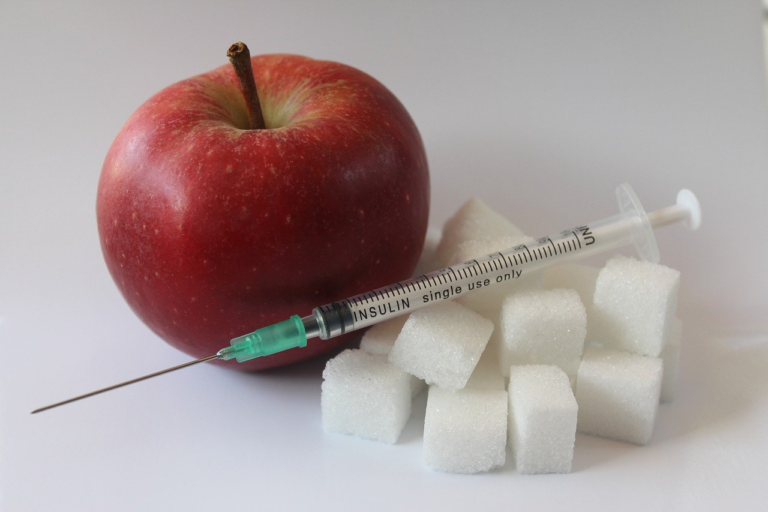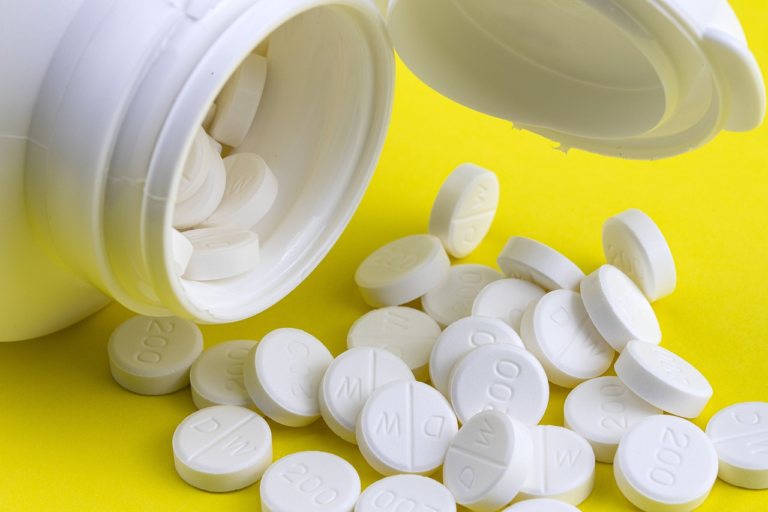The Impact of Alcohol on Blood Sugar Control in diabetics – How to Enjoy Responsibly
#ez-toc-container {
background: #f9f9f9;
border: 1px solid #aaa;
border-radius: 4px;
-webkit-box-shadow: 0 1px 1px rgba(0, 0, 0, .05);
box-shadow: 0 1px 1px rgba(0, 0, 0, .05);
display: table;
margin-bottom: 1em;
padding: 10px 20px 10px 10px;
position: relative;
width: auto;
}
.ez-toc-container-direction {
direction: ltr;
}
.ez-toc-list-level-1 a{
font-weight:bold;
}
Table of Contents
1. Introduction: Understanding the Relationship Between Alcohol and Blood Sugar
Understanding the relationship between alcohol and blood sugar is crucial, especially for individuals managing diabetes. Alcohol consumption can have a significant impact on blood glucose levels, making it essential for those with diabetes to comprehend how alcohol interacts with their body. Navigating the complexities of alcohol’s influence on blood sugar helps in crafting strategies for responsible drinking that minimizes potential risks.
Firstly, it’s important to note that alcohol can both raise and lower blood sugar levels. This dual effect depends on various factors, including the type of alcohol consumed, the amount, and whether it’s consumed with food.
- Immediate Effects: Upon consumption, alcohol is absorbed into the bloodstream, and it can initially raise blood sugar, particularly if the beverage contains carbohydrates.
- Delayed Impact: As the liver prioritizes metabolizing alcohol over glucose production, blood sugar levels can drop several hours after drinking. This is particularly concerning for individuals using insulin or glucose-lowering medications.
The importance of responsible drinking among individuals with diabetes cannot be overstated. Consuming alcohol without proper management can lead to hypoglycemia (low blood sugar) or hyperglycemia (high blood sugar), both of which pose significant health risks. Therefore, those with diabetes need to develop strategies for alcohol consumption that protect their health while allowing for social enjoyment.
Here are some guidelines for safe alcohol consumption for individuals with diabetes:
- Consult Healthcare Providers: Before consuming alcohol, discuss it with healthcare providers to understand personal risks and recommendations.
- Monitor Blood Sugar Levels: Regular monitoring before, during, and after drinking can help manage and anticipate significant fluctuations in blood sugar.
- Choose Wisely: Opt for drinks with lower sugar content, such as dry wines or spirits mixed with sugar-free mixers.
- Set Limits: Moderation is key. Limiting alcohol intake reduces the risk of adverse effects on blood sugar control.
- Never Drink on an Empty Stomach: Consuming alcohol with food helps attenuate blood sugar swings.
By adhering to these guidelines, individuals with diabetes can enjoy alcohol in a manner that is mindful of their condition, ensuring their well-being remains a priority. Recognizing alcohol’s influence on blood sugar and implementing these strategies can facilitate a balance between maintaining health and engaging in social activities.
In summary, understanding the interplay between alcohol and blood sugar levels is vital for those with diabetes. Through responsible drinking practices and awareness of guidelines, individuals can manage their condition effectively while still partaking in the occasional alcoholic beverage. Implementing strategic consumption plans empowers individuals to mitigate health risks and maintain optimal blood sugar control.

2. The Biochemical Impact of Alcohol on Diabetic Blood Sugar Levels
Alcohol consumption presents unique challenges and risks for individuals with diabetes due to its intricate biochemical interactions with the body, particularly the liver. Understanding these interactions is crucial for managing blood sugar levels and avoiding potential complications such as hypoglycemia and hyperglycemia.
Alcohol and Liver Interaction Affecting Glucose Production
The liver plays a central role in regulating blood glucose levels by producing glucose through gluconeogenesis and breaking down glycogen stores. When alcohol is consumed, it competes with gluconeogenesis due to the prioritization of alcohol metabolism by the liver. This process can inhibit the liver’s ability to release glucose into the bloodstream, which has a significant impact on blood sugar regulation.
- Alcohol Metabolism: Upon consumption, alcohol is absorbed by the stomach and intestines and enters the bloodstream. The liver metabolizes alcohol using enzymes such as alcohol dehydrogenase and aldehyde dehydrogenase, converting it into acetaldehyde and then to acetate.
- Gluconeogenesis Inhibition: The liver prioritizes alcohol metabolism over gluconeogenesis, consequently reducing the liver’s capacity to release glucose. This can lead to a decrease in blood glucose levels, which is particularly concerning for individuals taking insulin or other glucose-lowering medications.
- Glycogenolysis Disruption: Alcohol’s interference with liver function also affects glycogenolysis – the breakdown of glycogen into glucose – dampening the blood sugar stabilizing mechanisms, potentially leading to hypoglycemia.
The Risk of Hypoglycemia and Hyperglycemia
Individuals with diabetes should be particularly wary of the risks of hypoglycemia and hyperglycemia when consuming alcohol. Each condition poses its own threats, compounded by alcohol’s effects on liver function.
- Risk of Hypoglycemia:
- Alcohol can cause blood sugar levels to fall, which is especially risky for those with diabetes as the usual symptoms of hypoglycemia such as dizziness and confusion can be similar to those of intoxication, making it difficult to recognize a hypoglycemic episode.
- Hypoglycemia can occur soon after drinking and for up to 24 hours afterwards due to decreased glucose production from the liver.
- Individuals on diabetes medications, particularly insulin or sulfonylureas, are at increased risk since these medications are designed to lower blood glucose levels which can be exaggerated by alcohol consumption.
- Risk of Hyperglycemia:
- Conversely, certain types of alcoholic beverages, especially those containing sugars or mixers, can lead to a spike in blood glucose levels, causing hyperglycemia.
- Mixed drinks, sweet wines, and sugary cocktails can contribute to this risk as they add excessive carbohydrates and sugars, influencing post-consumption blood sugar levels.
- Failure to account for these sugars while managing diet can result in poorly controlled diabetes management.
Varying Impacts of Different Types of Alcoholic Beverages
The type of alcoholic beverage consumed can significantly influence its effect on diabetic blood sugar levels. Understanding these differences aids in making informed decisions about alcohol consumption.
- Beer: Generally, beer contains carbohydrates that can initially raise blood sugar levels. However, the alcohol component might later decrease blood sugar, causing a fluctuating impact.
- Wine: Dry wines generally have a minimal effect on blood glucose levels compared to sweet wines. The sugar content in the latter can significantly alter blood sugar levels post-consumption.
- Spirits: Distilled spirits such as vodka, gin, and whiskey generally have less impact on blood sugar levels since they contain little to no carbohydrates, but sugary mixers must be avoided to prevent a spike in blood sugar.
- Mixed Drinks: Drinks mixed with syrups, juices, or sodas are typically high in sugar and can substantially increase blood glucose levels. Opting for sugar-free mixers can mitigate this risk.
In conclusion, the interaction between alcohol and the liver significantly affects glucose production and can lead to hypoglycemia or hyperglycemia in individuals with diabetes. Careful management and an understanding of how different alcoholic beverages impact blood sugar are critical for safe consumption.
By remaining aware of the biochemical effects of alcohol, individuals with diabetes can better manage their condition while still enjoying the occasional drink responsibly.

3. Strategies for Enjoying Alcohol Responsibly with Diabetes
Managing diabetes involves making mindful choices, and when it comes to consuming alcohol, the same principles apply. Alcohol can have varying effects on blood sugar levels; therefore, it’s essential to implement strategies for enjoying alcohol responsibly if you have diabetes. Here, we’ll explore recommended alcohol choices, the significance of monitoring blood sugar, and tips on food pairing and timing to mitigate fluctuations.
Recommended Alcoholic Beverage Choices for Diabetics
The type and amount of alcohol consumed can significantly impact blood glucose levels. Below are some recommended choices that are generally considered better options for those managing diabetes:
- Dry Wines:
Opt for dry red or white wines, as they typically have lower sugar content. For instance, a glass of merlot or chardonnay can be a safer choice compared to sweet wines.
- Light Beers:
Choose light beers, which are often lower in carbohydrates and calories than regular beers. Brands like Michelob Ultra or Budweiser Select are frequently recommended.
- Spirits with Zero-Calorie Mixers:
Spirits such as vodka, gin, whiskey, and rum contain no carbs, making them a feasible choice when mixed with zero-calorie options like club soda or diet tonic.
- Low-Carb Cocktails:
Seek cocktails made with sugar-free ingredients. Use mixers like diet soda or fresh lime juice to keep the drink diabetes-friendly.
The Importance of Monitoring Blood Sugar Levels
Alcohol consumption can lead to unpredictable blood sugar fluctuations, which is why monitoring your levels before, during, and after drinking is crucial. Here’s a breakdown of what to pay attention to at each stage:
- Before Drinking:
Ensure your blood sugar level is in a safe range. Eating a well-balanced meal with carbs can help stabilize blood sugars before introducing alcohol.
- During Drinking:
Keep an eye on your response to alcohol. It’s beneficial to check your blood sugar at intervals to identify any changes in real-time.
- After Drinking:
Post-drinking checks are vital as the liver prioritizes metabolizing alcohol over glucose regulation, potentially leading to lower blood sugars.
Tips on Food Pairing and Timing
Pairing your drink with the right foods and timing consumption can further help manage blood sugar levels. Consider the following tips:
- Balanced Meals:
Combine your drinks with meals rich in proteins and fibers. Foods like grilled chicken or a Greek salad can slow alcohol absorption and provide essential nutrients.
- Pre-Drink Snacks:
Opt for a healthy snack, such as almonds or cheese sticks, before drinking to help prevent blood sugar swings.
- Timing of Consumption:
Avoid drinking on an empty stomach. Drink during mealtime to allow glucose absorption to align with alcohol consumption.
- Hydration:
Stay hydrated by alternating alcoholic drinks with water. This can aid in moderation and help maintain hydration levels.
Incorporating these strategies can help individuals with diabetes enjoy alcohol more safely and responsibly. Always consult with healthcare professionals for personalized advice, and continue to prioritize your health and well-being.
4. Educating Diabetics on Safe Drinking Practices
When it comes to managing diabetes, understanding the intricate relationship between alcohol consumption and blood sugar levels is crucial. Healthcare providers have a pivotal role in guiding their patients on how to enjoy social occasions responsibly, while also keeping their health a top priority. This segment will explore the significant role of healthcare providers in educating patients on safe drinking practices, provide practical advice on recognizing signs of blood sugar imbalance during alcohol consumption, and emphasize the importance of social support and drinking in a safe environment.
The Role of Healthcare Providers in Educating Patients on Alcohol and Diabetes
Healthcare providers are essential in bridging the gap between medical guidelines and everyday practices, particularly for diabetics who must navigate the complexities of living with this chronic condition. Here’s how they can assist:
- Personalized Guidance: Healthcare providers can offer customized advice based on individual health profiles, tailoring recommendations to suit unique needs and conditions.
- Education on Risks: It’s crucial that patients understand not just that alcohol can affect their blood sugar, but precisely how it does—and under what conditions those effects might become dangerous.
- Regular Monitoring: By encouraging regular blood sugar monitoring before and after alcohol consumption, providers can help patients learn how their body reacts to different types of alcohol.
Practical Advice on Recognizing Signs of Blood Sugar Imbalance While Consuming Alcohol
Understanding how to detect signs of blood sugar imbalance while drinking is vital for diabetics. Alcohol can both obscure and mimic symptoms, making vigilance crucial. Here’s how individuals can stay alert:
- Know the Signs: Learn the symptoms of both hypoglycemia and hyperglycemia. These include confusion, dizziness, fatigue, and unusual mood swings. Remember, alcohol can mask these symptoms, delaying necessary action.
- Testing: Use portable blood glucose monitors to periodically check blood sugar. This is especially important if meals are skipped or delayed or if someone feels unwell.
- Limit Hard Liquors and Sugary Mixers: Hard alcohol and sugary cocktails can cause unpredictable blood sugar spikes. Opt for drinks with more consistent effects, such as wine or light beer.
- Eat Before You Drink: Consuming a balanced meal with carbohydrates and protein before drinking can buffer blood sugar fluctuations and reduce the risk of hypoglycemia.
- Stay Hydrated: Drink a glass of water between alcoholic beverages. This helps maintain hydration and can slow down the consumption of alcohol, giving the body more time to process it safely.
Importance of Social Support and Drinking in a Safe Environment
Sharing experiences in a supportive environment tremendously helps diabetics adhere to their health plans. Here’s why a robust support network is beneficial:
- Designated Allies: Choose a friend or family member to be your ally who understands diabetes and its risks. They can provide reminders or help if symptoms of blood sugar imbalances become evident.
- Positive Reinforcement: Celebrate responsible drinking choices and small victories with friends and family who understand the difficulties of managing diabetes while maintaining a social life.
- Environmental Factors: Opt for venues known for being accommodating to dietary requests, ensuring meals and snacks are safe and arrive on time.
- Peer Experiences: Engage with diabetic communities both online and offline. Sharing personal stories and strategies can be inspiring and informative.
Ultimately, understanding that maintaining control over diabetes doesn’t mean an end to enjoyable social occasions is empowering. By equipping themselves with knowledge, utilizing the support of healthcare professionals, and fostering a conscious community, diabetics can navigate social drinking environments safely and confidently.





